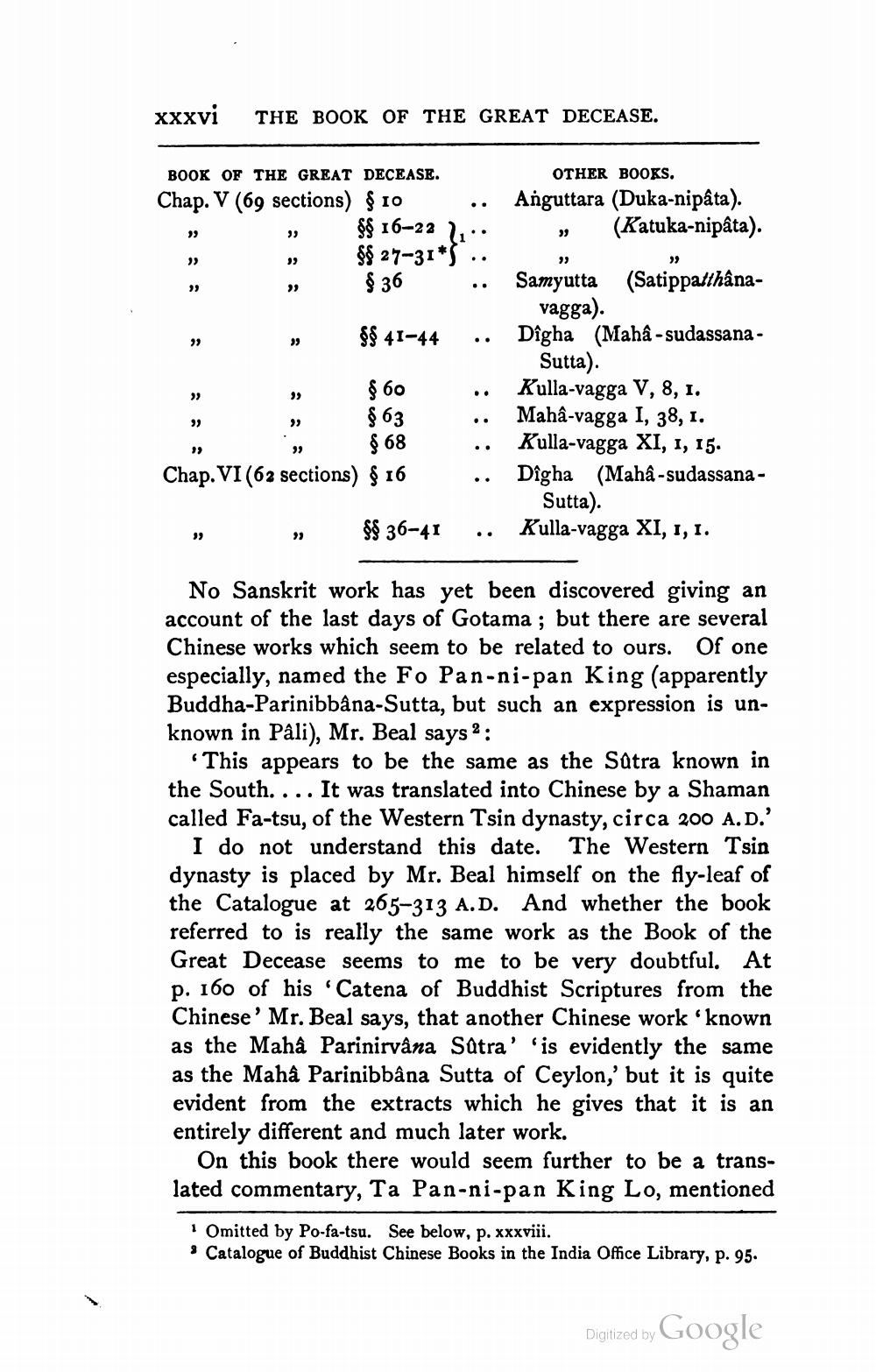________________
xxxvi
BOOK OF THE GREAT DECEASE.
Chap. V (69 sections) § 10
§§ 16-22
§§ 27-31*S
§ 36
§§ 41-44
§ 60
§ 63
§ 68
39
Chap. VI (62 sections) § 16
د.
""
99
""
""
THE BOOK OF THE GREAT DECEASE.
""
"9
22
99
""
ور
در
""
99
""
§§ 36-41
..
..
..
..
OTHER BOOKS.
Anguttara (Duka-nipâta). (Katuka-nipâta).
39
""
""
Samyutta (Satippa/thâna
vagga).
Digha (Maha-sudassana - Sutta).
Kulla-vagga V, 8, 1. Mahâ-vagga I, 38, 1. Kulla-vagga XI, 1, 15.
Dîgha (Maha-sudassanaSutta). Kulla-vagga XI, I, 1.
No Sanskrit work has yet been discovered giving an account of the last days of Gotama; but there are several Chinese works which seem to be related to ours. Of one especially, named the Fo Pan-ni-pan King (apparently Buddha-Parinibbâna-Sutta, but such an expression is unknown in Pâli), Mr. Beal says 2:
'This appears to be the same as the Sûtra known in the South.... It was translated into Chinese by a Shaman called Fa-tsu, of the Western Tsin dynasty, circa 200 A.D.' I do not understand this date. The Western Tsin dynasty is placed by Mr. Beal himself on the fly-leaf of the Catalogue at 265-313 A.D. And whether the book referred to is really the same work as the Book of the Great Decease seems to me to be very doubtful. At p. 160 of his 'Catena of Buddhist Scriptures from the Chinese' Mr. Beal says, that another Chinese work 'known as the Mahâ Parinirvâna Sûtra' 'is evidently the same as the Mahâ Parinibbâna Sutta of Ceylon,' but it is quite evident from the extracts which he gives that it is an entirely different and much later work.
On this book there would seem further to be a translated commentary, Ta Pan-ni-pan King Lo, mentioned
1 Omitted by Po-fa-tsu. See below, p. xxxviii. Catalogue of Buddhist Chinese Books in the India Office Library, p. 95.
Digitized by
Google




